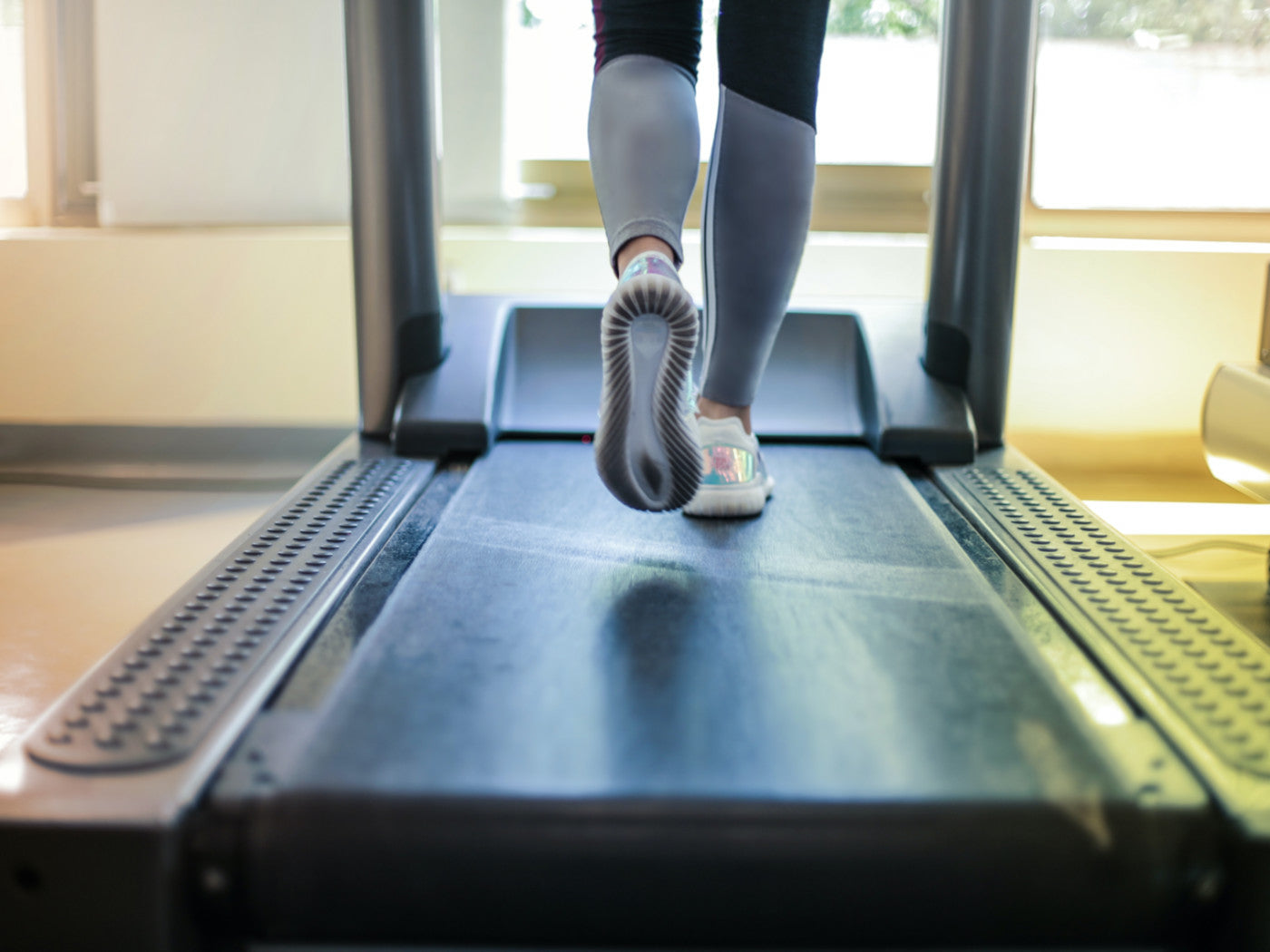VR technology has rapidly transformed the way we experience digital content, offering immersive and captivating adventures right at our fingertips. From thrilling games to interactive simulations, VR headsets like Meta Quest 2, Pico VR, and PSVR2 have revolutionized the way we engage with virtual worlds. As the popularity of VR continues to soar, fitness enthusiasts and gamers alike have been wondering, can you use VR while you are on a treadmill? The answer lies in a groundbreaking VR fitness app that seamlessly combines the real and virtual worlds, providing an exciting and effective workout experience.
Is Playing VR Safe While on a Treadmill?
Virtual reality adds a new dimension to treadmill workouts, immersing users in exciting virtual worlds while they jog or run. The combination of VR and treadmill exercises can be a thrilling and immersive experience but safety is a priority concern. As with any physical activity, it's essential to understand the potential risks and take necessary precautions to ensure a safe and enjoyable VR treadmill workout.
Before engaging in VR treadmill workouts, it's essential to assess the risks involved. One of the primary concerns is the lack of visual cues and reference points while wearing a VR headset. In traditional treadmill exercises, users rely on their surroundings to maintain balance and stay centered on the treadmill. However, with a VR headset covering their eyes, users may lose their sense of space and position, increasing the risk of falls or accidents.

Calibrating the VR headset and treadmill correctly is crucial to reduce the risk of accidents during VR treadmill workouts. Improper calibration can lead to discrepancies between virtual movements and physical actions, causing disorientation and potentially leading to falls. Following the manufacturer's instructions for calibration and ensuring that both the VR headset and treadmill are synced accurately are essential steps in promoting safety during VR workouts.
Reputable VR treadmill apps, such as Octonic, prioritize user safety by incorporating various safety features. These features include real-time positional tracking, which ensures that your movements in the virtual world match your actions on the treadmill accurately. Additionally, many VR treadmill apps implement warning systems that alert users when they stray too far off the treadmill, reducing the risk of collisions or accidents.
Octonic: A VR Fitness App Revolutionizing Treadmill Workouts
Octonic stands out among VR fitness apps, offering a unique and innovative approach to treadmill workouts. Compatible with a wide range of treadmills from various brands, Octonic utilizes its VR Motion Engine to seamlessly integrate virtual worlds with your treadmill activities.

Traditional treadmill workouts can sometimes become monotonous but with VR integration, your fitness routine transforms into an exciting escapade. With Octonic, you can immerse yourself in scenic runs through sprawling desert canyons, traverse alien planetary surfaces, and compete in multiplayer arenas against friends and AI opponents. The virtual environments are not only visually stunning but also designed to keep you engaged, making your workout sessions feel like thrilling adventures.
Safety is paramount in any fitness activity and VR treadmill workouts are no exception. Octonic takes safety seriously, incorporating a proprietary 3-level safety system to ensure a secure and enjoyable VR experience. Real-time positional tracking and a departure warning system prevent accidents by pausing the experience if you stray too far off the treadmill. The system also uses mixed reality passthrough to avoid potential injuries, creating a worry-free environment for your fitness adventures.

Common Challenges of Using VR on a Treadmill
While the idea of combining virtual reality with treadmill workouts holds immense appeal, it comes with its fair share of challenges. Incorporating VR into your treadmill exercise routine can elevate the experience but it also introduces some hurdles that users need to be aware of. Understanding these challenges is essential to ensure a safe and enjoyable VR treadmill workout.
1. Navigating Virtual Environments While in Motion
One of the primary challenges of using VR on a treadmill is navigating virtual environments while in motion. Unlike traditional gaming, where you have a stable physical space, walking or running on a treadmill adds an extra layer of complexity. Without a physical reference point, it can be challenging to maintain balance and orientation within the virtual world. Users may find it challenging to synchronize their real-world movement with the virtual environment, leading to disorientation and discomfort.
2. Addressing Motion Sickness and Disorientation
Motion sickness is a well-known issue in VR experiences and it can worsen when combined with treadmill workouts. The sensory disconnect between the visual perception of movement in the virtual world and the lack of corresponding physical motion can lead to feelings of nausea and disorientation. Users may need time to adapt to the sensation of moving within a virtual environment, and even then, some individuals may be more prone to motion sickness than others.
Recommended VR Accessories:
1. ZyberVR Battery Head Strap for Quest 2
2. ZyberVR Knight Controller Grips for Quest 2
3. ZyberVR Knuckle Grips for Pico 4
4. ZyberVR VR Prescription Lenses
Conclusion
The integration of VR technology with treadmill workouts has opened up a world of exciting possibilities for fitness enthusiasts and gamers alike. With VR fitness apps like Octonic, users can embark on thrilling virtual adventures while getting their daily dose of exercise. However, safety should always be a top priority when using VR on a treadmill.





